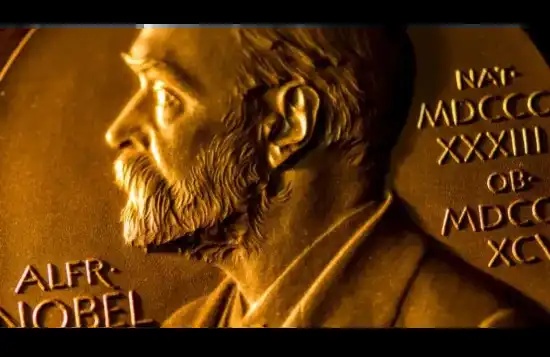How to solve the user experience issues brought by using EVM chain as Bitcoin L2?
Original author: Haotian
Editor's note: While there are various Layer2 solutions for Bitcoin, some projects have proposed a simpler approach: using known EVM chain components directly as Bitcoin Layer2. This approach is efficient and fast, but greatly reduces the user experience. Particle Network has come up with a solution to address the issue of user experience friction. Cryptocurrency researcher Haotian has analyzed this on X, and BlockBeats has compiled the full text below:
Due to the lack of a "canonical" standard for Bitcoin Layer2, there are some solutions in the market that directly use EVM chains as extension layers. This should be the most convenient, efficient, and expedient "quick-fix" Layer2 solution.
However, there is an awkward situation in the implementation of such solutions, as native wallets like Unisat cannot adapt to the EVM chain environment and require an additional layer of MetaMask. What to do? @ParticleNtwrk has brought a set of solutions:
Recently, the Bitcoin Layer2 ecosystem has become like the chaotic "Warring States" period, with various Layer2 solutions for expanding Bitcoin, due to the confirmed limitations of the Bitcoin mainnet. These solutions are full of uncertainty, ranging from slow progress like LN, to precision complexity like BitVM, to unknown vagueness like client verification. In this process, some projects have opted for a simple solution.
Since Bitcoin's native assets are very important, EVM chain scalability is also leading, and pure UTXO chain structure is too complex, why not directly use known EVM chain components as Bitcoin Layer2?
From a preliminary observation, projects such as Merlin Chain and LumiBit have adopted similar solutions. They accept the validation and computational flaws of the Bitcoin mainnet, only using Bitcoin as an asset settlement layer, and then connect to the EVM chain with mature scalability and consensus performance. By transferring BTC and its derivative assets to the EVM environment for effective circulation and management, they can achieve second-layer scalability.
Usually, MetaMask and other wallets are supported in the EVM environment, while Unisat, Xverse, and other wallets are supported in the Bitcoin environment. If EVM is used as a second layer for Bitcoin, users' assets on Unisat will need to be migrated to the MetaMask environment and then connected to the second layer network using MetaMask. This infrastructure requirement will make the user interaction experience extremely poor, and some Bitcoin native users who were brought in by the inscription will inevitably encounter learning barriers when encountering multi-chain wallets.
This is because the signature algorithm of Bitcoin and the contract parsing function of EVM are not compatible. Forcing compatibility will definitely cause friction in user experience. Based on this, Particle Network has launched the BTC Connect account abstraction function that serves the Bitcoin ecosystem, aiming to seamlessly connect EVM chains through native Bitcoin wallets such as Unisat. How to do it? In fact, the logic is very simple:
Due to Unisat's own private key generation encryption algorithm, under normal circumstances, EVM native wallets such as Metamask cannot directly parse this type of algorithm, and therefore need to correctly parse it when calling for user signature in DApps.
Particle is equivalent to providing an account abstraction framework. Users connect to the Unisat wallet, and Particle automatically generates an EVM address corresponding to the user on the EVM chain. When users make frontend interaction requests on Unisat, Particle automatically adapts to the backend and EVM environment.
For example: If a user wants to transfer BTC assets from the Bitcoin mainnet to Merlin Chain, Particle will support the user in securely transferring the assets to Merlin Chain. Once the relevant address receives the assets, a Wrapped BTC asset will be automatically generated through a contract on the user's corresponding EVM address for circulation.
For example, when a user connects to Merlin Chain using Unisat, and wants to perform a Swap operation on Merlin, Merlin needs to call the user's local Unisat private key to generate a signature. However, since the signature algorithm of Bitcoin is not consistent with the EVM parsing logic, it may not be able to call it correctly. At this time, Particle plays the role of a communication protocol, and Merlin will call its corresponding EVM address private key. The EVM address will then call the corresponding address private key on Unisat through the Particle account abstract network. The entire process is imperceptible to the user experience.
Completing the compatibility of the native Bitcoin wallet and EVM environment is just the first step. Due to the fact that Particle's solution is based on the ERC4337 account abstraction standard, its Smart Account, Paymaster, Bundler, and other features can be used to achieve some clever functions, such as gasless transactions, batch transactions, and communication interaction with other EVM chain environments. In theory, based on a BTC wallet, it can achieve interoperability with the entire EVM chain.
Of course, there are a series of key issues in this process that need to be addressed by the EVM chain to solve the problem of secure cross-chain transfer of Bitcoin assets, especially the rich inscription assets outside of BTC assets. For example, how to safely cross-chain BTC native assets, how to efficiently account for various indexer indexers, how to make use of inscription DA, how to design challenge mechanisms, and so on. In short, the core of layer 2 expansion lies more in the widespread circulation and landing of derivative assets.
To some extent, this asset settlement layer solution that treats Bitcoin as a second-layer extension chain may not seem as "advanced" as the native BTC solution with client verification and state channels at first glance. However, this is not necessarily the case. After all, in the absence of a formal standard for Bitcoin Layer2, these rapidly advancing solutions are exploring a possibility based on the principle of existence being reasonable. Do you agree?
Actually, regardless of whether you agree or not, the BTC ecosystem will evolve and develop at a certain pace, and eventually move towards directions with higher market recognition, just like Rollup becoming the mainstream Layer2 of Ethereum after a long process.
Anyway, Particle's recent actions are sure to win big. The integration capabilities of its underlying framework, which relies on interactivity in the midst of chaos, are truly impressive.
Original Link
Welcome to join the official BlockBeats community:
Telegram Subscription Group: https://t.me/theblockbeats
Telegram Discussion Group: https://t.me/BlockBeats_App
Official Twitter Account: https://twitter.com/BlockBeatsAsia


 Forum
Forum Finance
Finance
 Specials
Specials
 On-chain Eco
On-chain Eco
 Entry
Entry
 Podcasts
Podcasts
 Activities
Activities
 OPRR
OPRR









